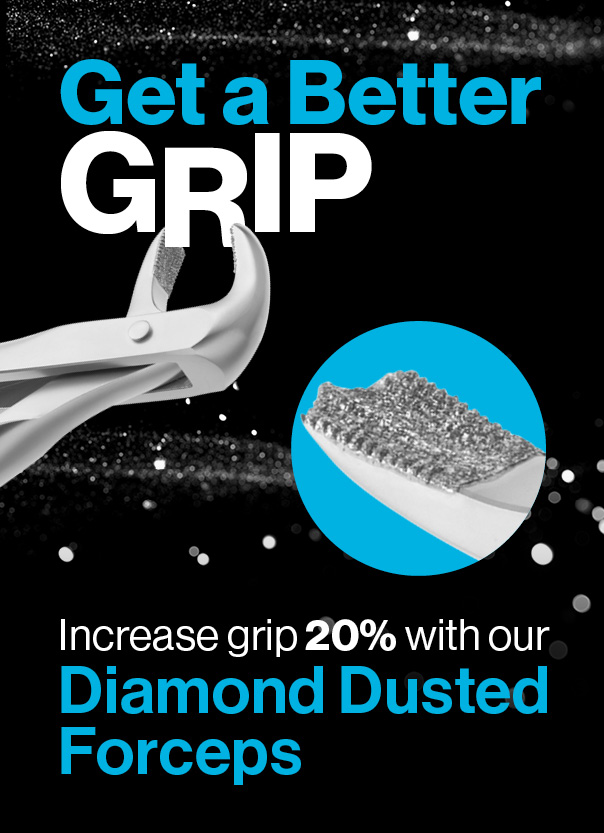Blog
4 Things to Look for in Your Composite Restoration Instrument Kit

If you had to pick just one set of composite instruments from the hundreds of designs and combinations available, which would you choose?
This may sound like another one of those “deserted island” questions, but for general and cosmetic practitioners, limiting your setup to instruments which truly help you to be efficient matters. It is much more beneficial to have a few carefully-selected, high-quality instruments at the ready than a dazzling array leaving you wondering what to use next. The world’s best golfers, after all, only carry 14 clubs in their bags.
When Dr. Didier Dietschi designed CompoSculp instruments, he recognized that dentists needed a simple solution when it came to placing, sculpting, and shaping composite material.
As we know, creating an aesthetic restoration requires proficient and meticulous attention to detail.
- To do it right, dentists need high-quality instruments that are up to the job of satisfying both patients and their own professional standards.
- To do it efficiently, dentists need instant access to a set of instruments perfectly suited for the job, thereby reducing time wasted choosing instruments or working with suboptimal instruments.
When thinking about selecting instruments for your restorative setup, here are four key characteristics to look for:
 1. High-Quality Craftsmanship
1. High-Quality Craftsmanship
Cheap instruments translate to poor craftsmanship. As Mauro Labanca asked in a recent guest column, “Shouldn’t we place the same importance on the instruments we use as we do on the work we do when using them?”
Dental instruments should be carefully crafted by manufacturing artisans who share the same attention to detail as dental professionals.
The working ends of the five CompoSculp instruments are made from Immunity Steel alloy, an optimal blend of carbon and chromium that provides strength and resists corrosion. Points are handcrafted by Hu-Friedy artisans who ensure each working end is flawlessly shaped, aligned, and sharpened.
2. Clear Labeling
Using the correct instruments at the right step of the procedure is a huge time savings during restorative procedures. When spreading composite material during an anterior restoration, for example, you want to be sure you have a fine blade in your hand and not a less dexterous paddled instrument.
CompoSculp instruments are color-coded so dentists can quickly identify the desired instrument at a glance. No more squinting at subtly different working ends.
3. Highly-Polished Working Ends
When working with sticky composite materials, having instruments which place and shape materials effortlessly is key.
CompoSculp instruments feature highly-polished stainless-steel working ends which better resist composite material. CompoSculp instruments work with you, not against you.
4. Ergonomic Handles
Carpal tunnel syndrome is a real problem in the dental profession. Even so, tired hands or slippery instruments can slow you down and impede the fine control needed for clinically desired restorations.
The weight and comfort of your instrument handles make all the difference. CompoSculp instruments are available with a choice of two lightweight handles: the durable, grippable ResinEight handles or the sleek smooth handles. Handles are also easy to clean, which saves time and prolongs the life of the instruments.
CompoSculp: Your Go-To Instruments for Everyday Restorations
The CompoSculp instrument kit includes the five instruments you need for superior restorations – no more, no less. Each instrument was thoughtfully designed by Dr. Dietschi to create beautiful anterior and posterior restorations.
The CompoSculp instruments are a perfect complement to Hu-Friedy’s restorative product line, which also includes the Black Line rubber dam clamps- critical for isolation, creating a dry, clean and highly visible working area. Learn more about CompoSculp and see the instruments in action!
Featured Key Opinion Leader
Dr. Didier Dietschi was licensed in 1984 and got his doctoral and Privat Docent degrees in 1988 and 2004, respectively, at the University of Geneva, Switzerland. He also got a PhD degree in 2003 at the University of ACTA, Netherlands. Following a 6-year period of full time teaching and research activity in Operative Dentistry and Periodontology, he started a part time activity in a private office in Geneva, dedicated to aesthetic restorative dentistry. He holds now positions of adjunct Professor at CASE Western University (USA) and senior lecturer at the University of Geneva. Dr. Dietschi has published more than 95 clinical and scientific papers and book chapters on adhesive and aesthetic restorations; he also co-authored the book “Adhesive Metal-free Restorations”, edited in 1997 by Quintessence and translated in 7 languages. Dr. Dietschi is lecturing internationally on adhesive & aesthetic restorations.



Blog Comments
Instruments
I have been a consistent user of Hu-Friedy instruments for as long as I can remember. I am a fan of the handles. Thank you